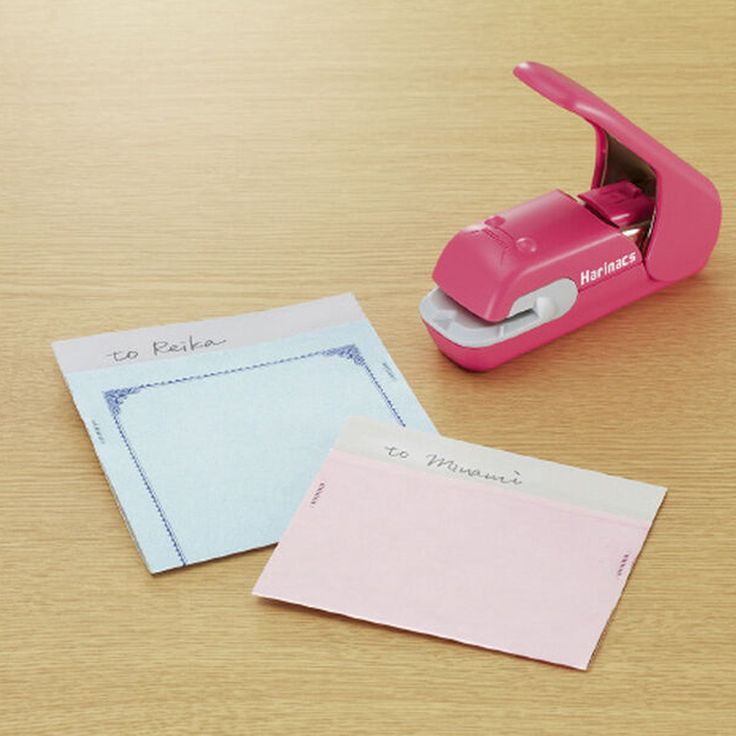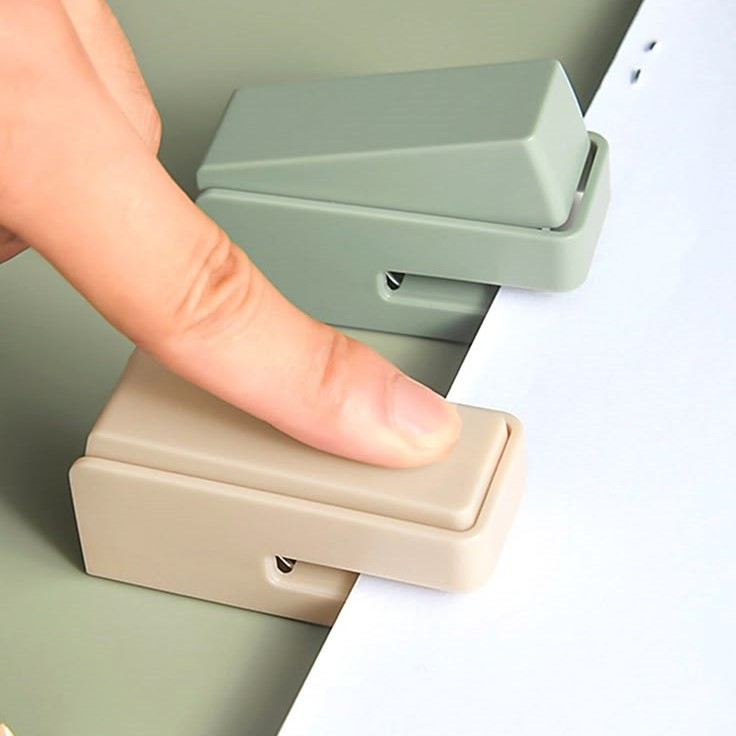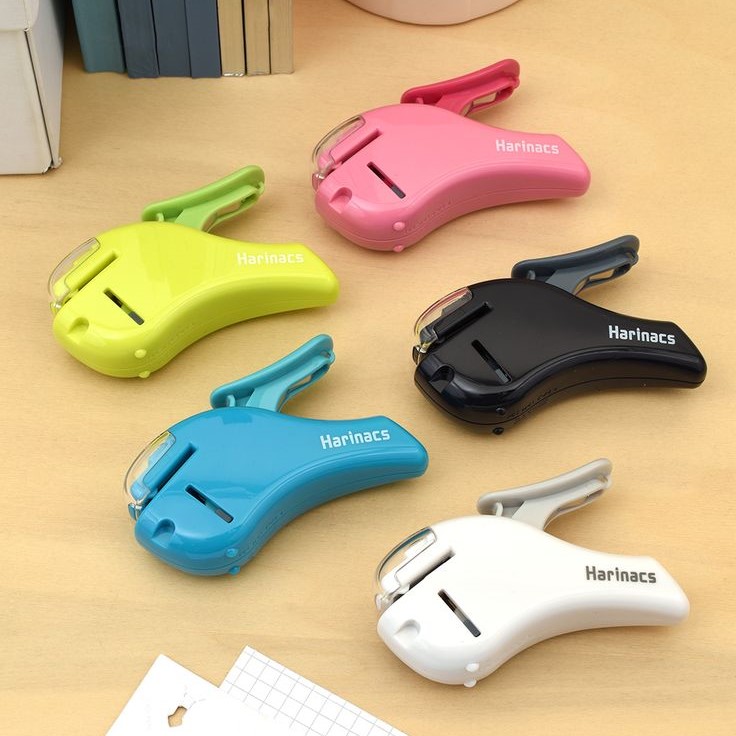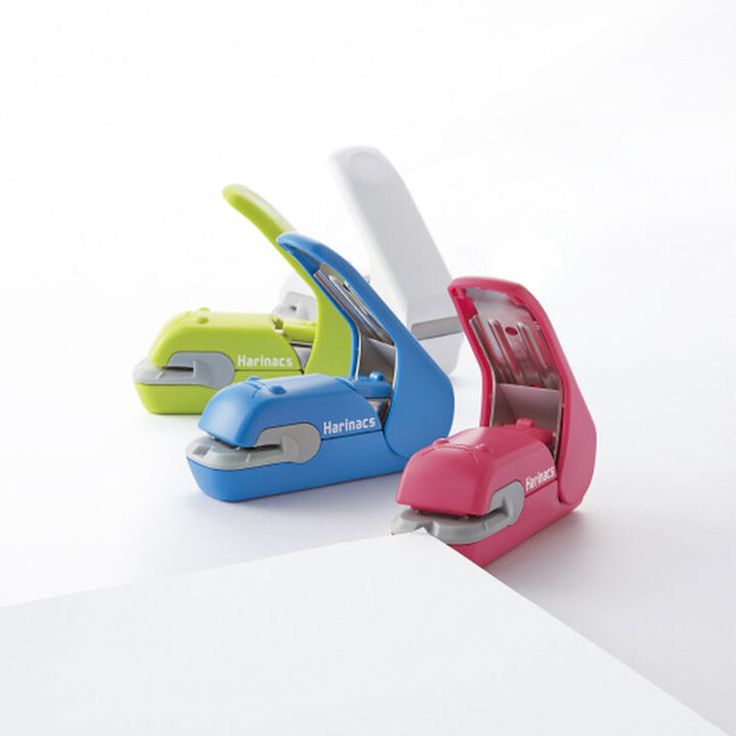The Rise of Stapleless Staplers in Modern Offices
In today’s environmentally conscious world, the stapleless stapler has emerged as a practical and sustainable alternative to traditional staplers. Unlike conventional staplers that rely on metal staples, these innovative devices use clever mechanisms to bind papers together without any additional materials. This makes them an excellent choice for offices aiming to reduce waste while maintaining efficiency.
A stapleless stapler works by folding or crimping the edges of paper stacks, creating a secure and professional-looking bind. It eliminates the need for refills, saving both time and money. Additionally, it reduces clutter in workspaces since there are no loose staples or discarded packaging to manage. These advantages make the stapleless stapler particularly appealing for businesses looking to streamline their operations while adopting greener practices.

As we delve deeper into this topic, let’s explore how stapleless staplers function, their environmental impact, and why they’re becoming increasingly popular in modern workplaces. Understanding the science behind these tools can help you decide if they’re right for your needs. Their growing adoption reflects broader shifts toward sustainability and innovation in everyday office equipment.
The transition from traditional staplers to stapleless staplers mirrors similar trends across industries where convenience and environmental responsibility intersect. For example, reusable water bottles have replaced single-use plastics, and energy-efficient lighting systems now dominate commercial buildings. Similarly, the rise of stapleless staplers signals a shift away from wasteful practices toward smarter, more efficient alternatives. Let’s examine further how these devices contribute to improved productivity and reduced ecological footprints.
How Does a Stapleless Stapler Work?
At its core, a stapleless stapler operates through a simple yet ingenious mechanism. When you insert a stack of papers into the device, the stapler folds or crimps the corners of the sheets, interlocking them securely. Depending on the model, this process may involve folding the top layer over the bottom one or pinching the edges together tightly. The result is a neat, compact bundle that stays together without requiring any external hardware.
This method offers several key benefits. First, it ensures compatibility with various paper thicknesses, making it versatile enough for everyday tasks like binding reports, invoices, or memos. Second, it avoids damaging documents with sharp metal points, preserving the integrity of important paperwork. Lastly, because no staples are involved, users don’t have to worry about running out of supplies mid-task—a common frustration with traditional staplers.
To better understand the mechanics, consider breaking down the steps involved in using a stapleless stapler:
- Insert the desired number of sheets into the device.
- Press the handle firmly to activate the crimping action.
- Remove the bound stack and verify alignment.
Each step contributes to a seamless user experience, promoting productivity and convenience in busy environments. Furthermore, different models offer varying capacities and features tailored to specific needs, enhancing versatility across diverse applications.
Advanced designs incorporate adjustable guides to ensure precise alignment regardless of stack size or shape. Some premium versions even include LED indicators signaling optimal positioning, reducing errors during high-volume projects. These enhancements underscore the evolution of stapleless technology beyond basic functionality, catering effectively to professional and personal users alike.

Environmental Benefits
One of the most compelling reasons to adopt a stapleless stapler is its positive environmental impact. Traditional staplers contribute significantly to office waste due to their reliance on disposable metal staples. Over time, these small pieces accumulate in landfills, where they take years—if not centuries—to decompose fully. By switching to a staple-free solution, organizations can drastically cut down on unnecessary material consumption.
Additionally, the production of metal staples involves energy-intensive processes such as mining, smelting, and manufacturing. Reducing demand for these products helps conserve natural resources and lower carbon footprints. For companies committed to sustainability goals, incorporating stapleless staplers into daily routines aligns perfectly with broader eco-friendly initiatives.
Beyond reducing waste, these devices also promote recycling efforts. Since papers remain unaltered by staples, they’re easier to sort and process during recycling. This simplifies waste management systems and encourages higher recycling rates within workplaces. As awareness around climate change grows, embracing tools like stapleless staplers becomes not just a practical decision but a responsible one.
Moreover, transitioning to stapleless options fosters cultural shifts within organizations. Employees become more mindful of resource usage when provided with tools designed to minimize environmental harm. Such behavioral changes ripple outward, influencing purchasing decisions and operational strategies across departments. Ultimately, adopting stapleless staplers represents part of a larger movement toward sustainable business practices beneficial for both people and the planet.
Common Misconceptions
Despite their growing popularity, some misconceptions surround stapleless staplers. One prevalent belief is that they lack durability compared to traditional staplers. However, advancements in design and materials ensure these devices hold up well under regular use. High-quality plastic components and reinforced hinges provide longevity, even when handling large volumes of paper daily.
Another misconception involves functionality. Critics argue that stapleless staplers cannot match the strength of metal-bound connections. While it’s true that certain applications—such as securing heavy documents—may still require traditional stapling, many everyday tasks benefit from the cleaner and more efficient approach offered by stapleless alternatives. Testing shows that properly crimped stacks maintain their structure effectively during typical handling scenarios.
Lastly, cost concerns often arise among potential buyers. Although initial prices for stapleless staplers might seem higher than basic staplers, long-term savings from eliminating supply costs quickly offset the difference. Users who calculate total expenses over time frequently find stapleless options to be more economical overall. Addressing these misunderstandings empowers consumers to make informed choices aligned with their unique requirements and values.

Choosing the Right Stapleless Stapler for Your Needs
Selecting the perfect stapleless stapler depends on several factors, including intended usage, budget, and personal preferences. For light-duty tasks, compact handheld models suffice, offering portability and ease of operation. These are ideal for individual desks or small teams needing occasional binding assistance. On the other hand, larger workgroups may benefit from desktop versions designed for heavier loads. Such models typically accommodate thicker stacks and feature ergonomic handles for comfortable prolonged use.
Capacity considerations play a critical role in decision-making. Entry-level devices usually support up to 5-10 sheets per cycle, whereas premium options extend this range to 20+ pages. Assess your average document sizes before committing to ensure adequate performance. Similarly, evaluate build quality; sturdier constructions withstand frequent activations better, extending service life.
Additional features further enhance usability. Look for adjustable guides to align papers precisely or integrated storage compartments for organizing related accessories. Some advanced models even include LED indicators signaling optimal stacking heights, improving accuracy during high-volume projects. Balancing all these elements guarantees you choose a product tailored specifically to your workflow requirements. Compatibility with existing systems and ease of integration should also factor into final selections.
Maintenance Tips for Long-Term Use
Proper maintenance extends the lifespan of your stapleless stapler, ensuring consistent performance across extended periods. Regular cleaning prevents dust buildup inside moving parts, which could otherwise cause jams or misalignments. Use soft brushes or compressed air cans to gently remove debris accumulated near hinges or cutting blades. Avoid harsh chemicals that might degrade delicate internal components.
Lubrication plays another crucial role in sustaining smooth actions. Apply lightweight oils sparingly along pivot points following manufacturer guidelines to avoid excess accumulation attracting dirt particles. Periodically inspect exterior surfaces for signs of wear or damage, replacing worn-out parts promptly to prevent further complications. Keeping track of warranty information provides added security knowing repairs or replacements remain covered under specified terms.

Educating colleagues about correct usage techniques promotes collective responsibility toward equipment care. Demonstrating proper insertion angles, applying appropriate pressure levels, and storing devices correctly after each session minimizes accidental damages significantly. Shared knowledge fosters healthier working habits benefiting everyone involved. Establishing routine inspection schedules ensures early detection of potential issues, facilitating timely interventions before major failures occur.
H2: Addressing Workplace Challenges with Stapleless Solutions
Integrating stapleless staplers into existing workflows addresses numerous challenges faced by modern offices. Paper jams caused by malfunctioning traditional staplers become a thing of the past thanks to streamlined designs minimizing obstructions. Similarly, safety hazards posed by exposed sharp edges disappear entirely, creating safer environments especially beneficial in educational settings or childcare facilities.
Productivity gains represent perhaps the most significant advantage associated with adopting stapleless technology. Tasks once delayed waiting for replenished staple cartridges now proceed uninterrupted, accelerating completion times considerably. Employees spend less effort troubleshooting mechanical issues allowing focus redirection towards value-added activities enhancing organizational success metrics directly.
Collaboration opportunities expand too. Teams utilizing shared resource pools appreciate reduced competition accessing limited stockpiles freeing space previously allocated storage containers bulky accessory boxes. Transitioning towards minimalist approaches streamlines logistics encouraging innovation fostering creativity throughout entire ecosystems. Standardizing processes around stapleless methods ensures consistency across departments improving overall cohesion within organizations.
Final Thoughts
In conclusion, stapleless staplers offer a practical and eco-conscious solution for modern workspaces seeking improved efficiency and sustainability. Their ability to bind papers securely without relying on metal staples makes them indispensable tools in today’s fast-paced and environmentally aware world. Whether used for personal projects or corporate documentation, these devices deliver reliable results while reducing waste and promoting greener practices.

By understanding their mechanisms, addressing common misconceptions, and selecting appropriate models based on specific needs, users maximize the benefits derived from incorporating stapleless staplers into their routines. As industries continue evolving toward more sustainable methodologies, embracing innovations like these proves essential for staying competitive and responsible stewards of our planet’s precious resources. With continued advancements expected in this field, expect even greater functionality and affordability in future generations of staple-free binding solutions. Investing in such technologies not only enhances productivity but also contributes positively to global efforts combating environmental degradation.




